 1996 Toyota Land Cruiser (J80, facelift 1995) Dimensions, Size & Specs
1996 Toyota Land Cruiser (J80, facelift 1995) Dimensions, Size & SpecsMeasurements of the 1996 Toyota Land Cruiser, engineered for optimal performance and comfort
| Dimensions | |
|---|---|
| Length: | 4890 mm192.5 in16.0 ft |
| Width: | 1940 mm76.4 in6.4 ft |
| Height: | 1875 mm73.8 in6.2 ft |
| Weight Specifications | |
| Curb Weight: | 2135 kg4707 lbs |
| Maximal permitted Weight: | 3060 kg6746 lbs |
| Roof Load: | 200 kg441 lbs |
| Tire Specifications | |
| Rims Size: | 16-inch rims:
|
| Tire Size: |
|
The Toyota Land Cruiser J80 (facelift 1995) is a robust and spacious SUV produced between 1995 and 1998, with the 1996 model year being a key representation of this generation. Renowned for its rugged off-road capability combined with practical comfort, the J80 facelift solidifies the Land Cruiser's reputation as a reliable SUV for both urban and adventurous driving. This model measures 4890 mm (192.5 inches) in length, 1940 mm (76.4 inches) in width, and 1875 mm (73.8 inches) in height. These dimensions provide a commanding presence on the road and offer ample interior space for passengers and cargo alike. The vehicle's curb weight is 2135 kg (4,706 lbs), while its maximum gross weight is rated at 3060 kg (6,744 lbs), reflecting its capability to carry substantial loads without compromising stability or performance. The Toyota Land Cruiser J80 features a roof load capacity of 200 kg (441 lbs), allowing for additional cargo or equipment to be safely transported atop the vehicle, an advantage for outdoor enthusiasts and families alike. The SUV rides on 16-inch rims sized 8Jx16, paired with durable 275/70 R16 tires that balance off-road traction and on-road comfort. Thanks to its dimensions and rugged specifications, the 1996 Land Cruiser J80 facelift is well-suited for demanding terrains, long-distance travel, and everyday use, maintaining Toyota’s legacy of durability and quality in the full-size SUV segment.
Discover the standout features that make the 1996 Toyota Land Cruiser a leader in its class
Have a question? Please check our knowledgebase first.
The Toyota Land Cruiser J80 facelift, produced between 1995 and 1998, has a length of 4890 mm (192.5 inches), a width of 1940 mm (76.4 inches), and a height of 1875 mm (73.8 inches). These dimensions place the J80 facelift firmly in the full-size SUV category, providing a spacious interior that is suitable for off-road adventures and comfortable family transportation alike. Its broad width adds to its road stability while the height ensures good ground clearance essential for rough terrain. This size makes the vehicle robust and commanding on the road and off it.
The Toyota Land Cruiser J80 facelift has a curb weight of approximately 2135 kg (4,707 lbs), which accounts for the vehicle's standard weight including all necessary fluids and a full tank of fuel but excluding passengers or cargo. The maximum permissible weight, or gross vehicle weight rating (GVWR), is 3060 kg (6,744 lbs). This means the vehicle can safely carry around 925 kg (2,037 lbs) of passengers, cargo, and any additional equipment without risking performance or safety. This substantial weight reflects the Land Cruiser’s robust build designed for heavy-duty use and off-road capability.
The roof load capacity of the Toyota Land Cruiser J80 facelift is 200 kg (approximately 441 lbs). This specification indicates the maximum weight that the vehicle's roof can safely support, including roof racks, cargo carriers, or other equipment. It is an important figure for owners planning to carry bulky items such as luggage, camping gear, or sports equipment on the roof. Overloading beyond this limit can compromise vehicle stability, safety, and structural integrity, especially during driving on rugged terrain or at higher speeds.
The Toyota Land Cruiser J80 facelift comes equipped with rims sized 8Jx16 inches, paired with tires sized 275/70 R16. These relatively wide and large tires provide an optimal balance of on-road comfort and excellent off-road traction. The tire size supports the vehicle’s heavy weight and enhances its ability to tackle a variety of terrains, from paved roads to rocky or muddy surfaces. The 16-inch rims also help maintain sidewall height on the tires, which improves shock absorption and durability during off-road driving.
Standard garages can vary, but typically a single-car garage has an internal width of about 2.4 to 2.7 meters (7.9 to 8.9 feet) and a length of around 5.5 to 6 meters (18 to 20 feet). With a width of 1.94 meters (6.36 feet) and a length of 4.89 meters (16.05 feet), the Toyota Land Cruiser J80 facelift will fit comfortably within these dimensions. However, it may leave limited space on either side for opening doors or moving around inside the garage, especially in narrower garages. The height of 1.875 meters (6.15 feet) is generally not an issue for standard single or double garages. Overall, owners should measure their garage before parking but generally this Land Cruiser model can fit standard garages.
Compared to its predecessor, the Toyota Land Cruiser J70 series, the J80 facelift (1995) is generally larger and more refined in its dimensions. The J70 typically had a length ranging from 4640 mm to 4915 mm depending on the variant, with widths generally narrower than the J80's fixed width of 1940 mm. The J80's width and height give it a more substantial road presence and increased interior space, offering improved comfort and utility. Additionally, the J80 generation introduced a more modern and aerodynamic design and higher curb weight due to added equipment and safety features. This evolution marks the J80 as a more luxurious and capability-focused Land Cruiser compared to the more utilitarian J70.
The Toyota Land Cruiser J80 facelift (1995) competes with other full-size SUVs like the Nissan Patrol Y60/Y61, Jeep Grand Cherokee ZJ, and early Mercedes-Benz G-Class models. Dimensionally, the Land Cruiser's length of 4890 mm (192.5 inches) and width of 1940 mm (76.4 inches) position it comfortably within the full-size SUV market, often slightly larger than some competitors which tend to range around 4600-4800 mm in length. The J80 features robust off-road capabilities, superior build quality, and a reputation for reliability that often surpasses many rivals. Its significant curb weight reflects solid construction and equipment levels. While some competitors might offer more luxury features, the Land Cruiser excels in a balance of ruggedness, interior space, and global serviceability.
Thanks to its generous dimensions—length of 4890 mm and width of 1940 mm—the interior of the Toyota Land Cruiser J80 facelift is spacious and comfortable for occupants. The cabin is designed to accommodate five to eight passengers depending on configuration, with ample headroom provided by the 1875 mm (73.8 inches) height. Legroom and shoulder room are generous, making long journeys comfortable. The large cargo area can be expanded by folding rear seats, which suits the needs of families, adventure travelers, or those requiring substantial transport capability. The balance between size and interior ergonomics makes the J80 a practical choice for both urban and off-road use.
The curb weight of 2135 kg (4707 lbs) for the Toyota Land Cruiser J80 facelift reflects its solid build, robust frame, and additional off-road equipment. While this weight promotes excellent stability and off-road capability, it also means the vehicle requires more power to move efficiently, which generally results in lower fuel efficiency compared to lighter vehicles. Drivers can expect moderate fuel consumption typical of a full-size SUV of this era. However, the weight contributes positively to on-road comfort by dampening road vibrations and enhancing ride quality. The Land Cruiser’s suspension and drivetrain are engineered to manage this weight effectively, producing confident handling despite its heavier mass.
The Toyota Land Cruiser J80 facelift (1995) holds a significant place in the SUV market due to its blend of rugged off-road capability, reliability, and comfort. Produced from 1995 to 1998, it represented a modernized evolution of the Land Cruiser lineage, with improvements in safety, interior refinement, and drivetrain technology. Its strong build quality and simplicity in mechanics make it highly durable and easy to maintain, traits much valued in many regions of the world. Enthusiasts and users still prize it for adventure travel and as a dependable workhorse vehicle capable of handling extreme conditions. Its lasting popularity stems from this unmatched reputation for toughness combined with practical comfort.
Discover similar sized cars.
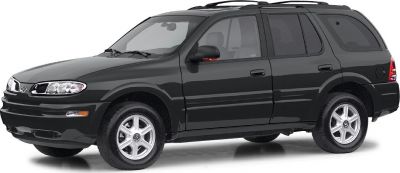
| Production: | 2001-2004 |
|---|---|
| Model Year: | 2002 |
| Length: | 4870 mm191.7 in |
| Width: | 1895 mm74.6 in |
| Height: | 1830 mm72.0 in |
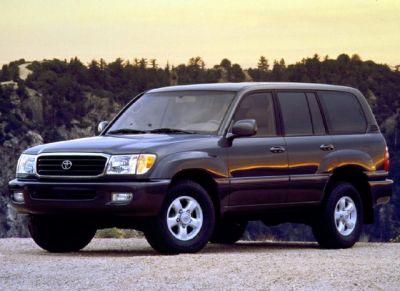
| Production: | 1998-2000 |
|---|---|
| Model Year: | 1998 |
| Length: | 4890 mm192.5 in |
| Width: | 1940 mm76.4 in |
| Height: | 1890 mm74.4 in |
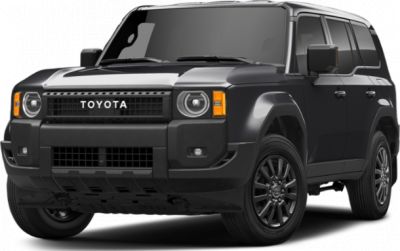
| Model Year: | 2024 |
|---|---|
| Length: | 4925 mm193.9 in |
| Width: | 1980 mm78.0 in |
| Height: | 1935 mm76.2 in |
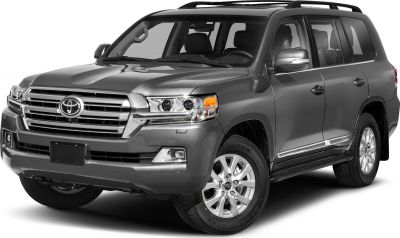
| Production: | 2017-2023 |
|---|---|
| Model Year: | 2017 |
| Length: | 4840 mm190.6 in |
| Width: | 1855-1885 mm73.0-74.2 in |
| Height: | 1845 mm72.6 in |
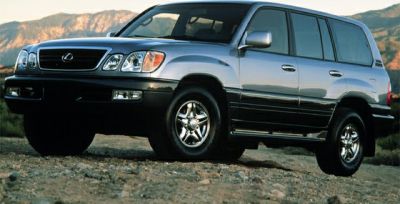
| Production: | 1998-2002 |
|---|---|
| Model Year: | 1998 |
| Length: | 4890 mm192.5 in |
| Width: | 1940 mm76.4 in |
| Height: | 1875 mm73.8 in |

| Production: | 2003-2008 |
|---|---|
| Model Year: | 2003 |
| Length: | 4866 mm191.6 in |
| Width: | 1897 mm74.7 in |
| Height: | 1826 mm71.9 in |
